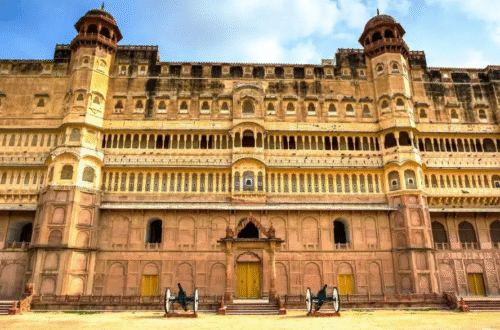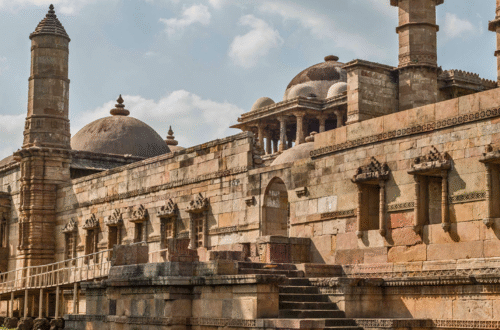There are the history of Jaisalmer fort which is very helpful for you. There we provide the information about the history, location, architecture and introu for you which is very usefull for you.
Introduction to Jaisalmere Fort
Jaisalmer Fort, also known as Sonar Quila (Golden Fort), is one of the largest living forts in the world.
Located in the city of Jaisalmer in Rajasthan, India, this fort is a blend of history, culture, and architecture. Built in the 12th century, it stands proudly in the heart of the Thar Desert. Jaisalmer Fort is a beautiful example of medieval architecture and remains a significant part of Rajasthan’s heritage.
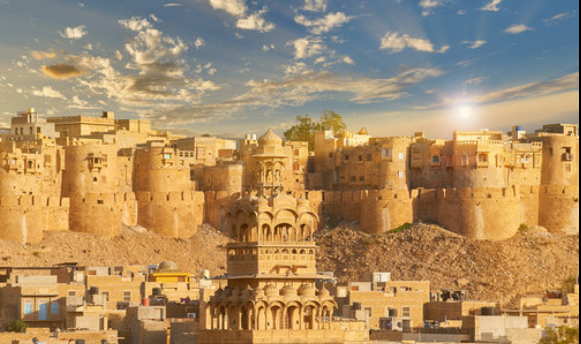
2. Location of Jaisalmere Fort
Jaisalmer Fort is situated in the western part of India, in the state of Rajasthan. The fort rises from the golden sand dunes of the Thar Desert, giving it its nickname “Golden Fort.”
It is located 575 kilometers from the state capital, Jaipur, and about 300 kilometers from the Pakistani border. The fort’s location offers a perfect view of the surrounding desert, making it a stunning sight, especially at sunset.
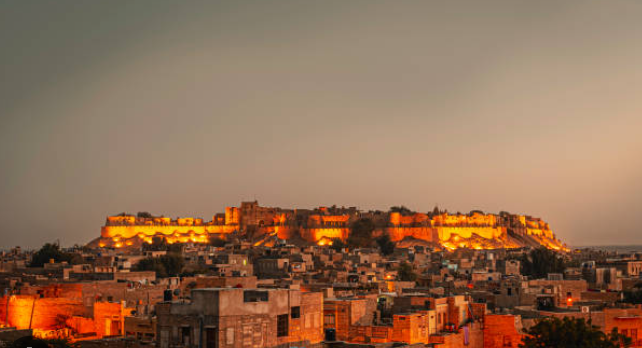
3. History of Jaisalmer Fort
The history of Jaisalmer Fort dates back to 1156 AD when it was founded by Maharawal Jaisal, a Rajput ruler. He built the fort on Trikuta Hill to protect his kingdom from invaders. Over the centuries, the fort has seen many changes and additions.
It served as a center of power for the region, witnessing battles, trade, and the growth of the city. The fort was not just a military structure but also a home to many families, as it is still inhabited today.
During the rule of various kings, the fort flourished as a trade center, especially for merchants dealing in spices, silk, and other valuable goods.
The fort’s strategic location made it an important part of the Silk Route. The fort has survived many attacks over the years, and despite modern developments, it still stands as a reminder of Rajasthan’s rich past.
4. Architecture of Jaisalmer Fort
The architecture of Jaisalmer Fort is a perfect blend of Rajput and Islamic styles, with stunning carvings and intricate designs. The fort is built using yellow sandstone, which gives it a golden appearance, especially during the day when the sun hits the walls. The fort is surrounded by a massive wall, with 99 bastions (watchtowers) that protect it from invaders.
Inside the fort, there are several beautiful Jain temples, palaces, and havelis. The Jain temples, dedicated to various Tirthankaras, have detailed carvings and beautiful sculptures.
The havelis (traditional homes of wealthy merchants) are famous for their intricate stonework and beautiful balconies.
The fort also has a series of narrow lanes, known as “Gali,” which lead to various parts of the fort, including shops, homes, and temples.
Some of the most notable buildings inside the fort include the Maharaja’s Palace and the Laxminath Temple.
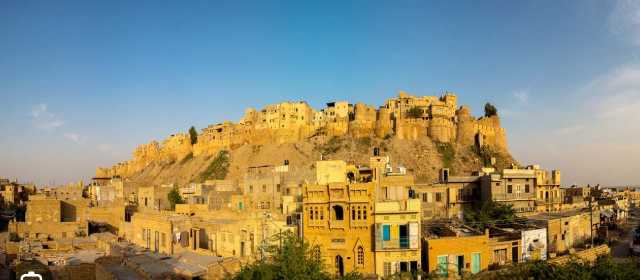
5. Key Features of Jaisalmer Fort
- Golden Appearance: The fort’s yellow sandstone gives it a unique golden color, especially at sunrise and sunset.
- Living Fort: Jaisalmer Fort is one of the few “living forts” in the world, meaning people still live inside it. Many families have lived in the fort for generations.
- Jain Temples: The fort houses several Jain temples that are known for their intricate architecture and detailed carvings.
- Bastions and Walls: The fort’s strong walls and watchtowers (bastions) served to protect the kingdom from invaders. There are 99 bastions in total.
- Palaces and Havelis: The Maharaja’s Palace is an important feature of the fort, with royal rooms and courtyards. The havelis inside the fort are also famous for their beautiful stonework and design.
6. Importance of Jaisalmer Fort Today
Today, Jaisalmer Fort is one of the most popular tourist attractions in Rajasthan. It has been recognized as a UNESCO World Heritage Site and attracts visitors from all over the world. People come to explore its history, admire its architecture, and learn about the rich culture of Rajasthan.
The fort also plays a significant role in preserving the traditions and lifestyle of the region. Many local artisans still live and work inside the fort, making handicrafts that reflect the cultural heritage of Rajasthan. The fort’s preservation ensures that future generations will be able to experience and learn about its history.
In addition to being a tourist destination, Jaisalmer Fort remains a symbol of Rajasthan’s strength, resilience, and rich cultural legacy. It is a place where history, architecture, and local life come together, making it an unforgettable experience for anyone who visits.
This simple explanation of Jaisalmer Fort highlights its history, architecture, and importance in a way that is easy to understand and learn. The fort is not only a beautiful piece of history but also a living example of Rajasthan’s culture and heritage. you can search more things about this here so you can tap here search more..

